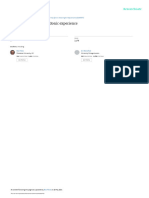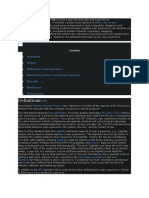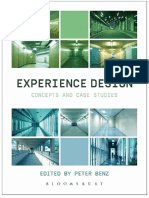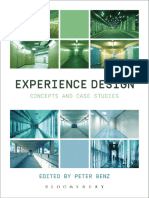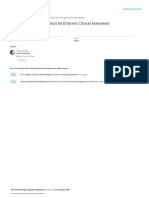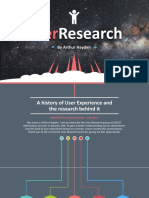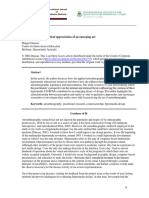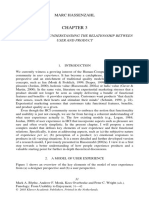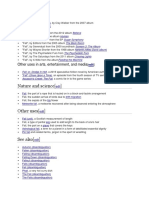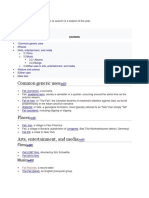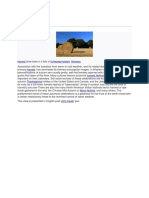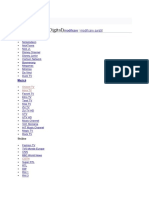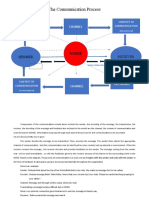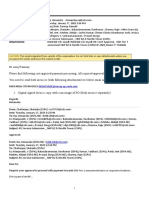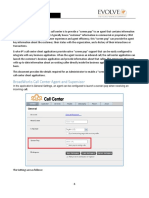0% found this document useful (0 votes)
35 views1 pageInfluences On User Experience: Holistic
The field of user experience represents an expansion of usability to include how a person feels about using a system holistically. User experience is measured through methods like questionnaires and usability tests to understand pleasure, value, and performance. Higher user experience is linked to greater effectiveness of digital health interventions. User experience is influenced by a user's state, system properties, and usage context. Both momentary emotions and overall experience impact a user's perception.
Uploaded by
Gabi IonitaCopyright
© © All Rights Reserved
We take content rights seriously. If you suspect this is your content, claim it here.
Available Formats
Download as DOCX, PDF, TXT or read online on Scribd
0% found this document useful (0 votes)
35 views1 pageInfluences On User Experience: Holistic
The field of user experience represents an expansion of usability to include how a person feels about using a system holistically. User experience is measured through methods like questionnaires and usability tests to understand pleasure, value, and performance. Higher user experience is linked to greater effectiveness of digital health interventions. User experience is influenced by a user's state, system properties, and usage context. Both momentary emotions and overall experience impact a user's perception.
Uploaded by
Gabi IonitaCopyright
© © All Rights Reserved
We take content rights seriously. If you suspect this is your content, claim it here.
Available Formats
Download as DOCX, PDF, TXT or read online on Scribd
/ 1





